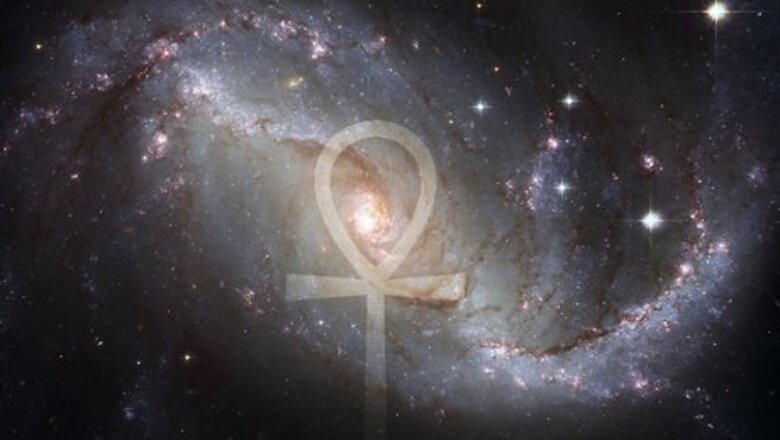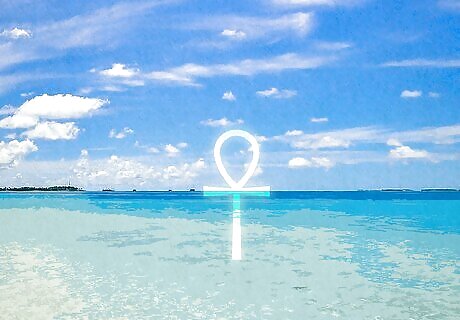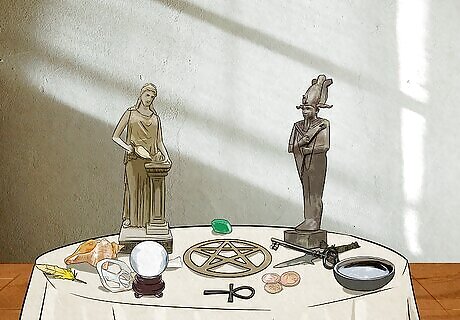
views
What is an ankh?

The ankh is an ancient Egyptian hieroglyphic that means “life.” Sometimes called the Key of Life or Key of the Nile, the Egyptian symbol and word “ankh” means “life” or “to live.” The symbol resembles the Christian cross but has a loop on top of the T-shape. It often symbolized spiritual and physical protection as well as healing, immortality, and connection to divinity. The ankh dates back to the Early Dynastic Period (c. 3150-2613 BCE), but its exact origins are unknown.
Ankh Symbolism and Meaning

The ankh represents life and life after death. In addition to promoting a long, healthy life, the ankh was also a symbol of an eternal afterlife. It was commonly found in tombs, on sarcophagi, and in other funerary practices to help guide the dead into the next life.

The ankh was used for protection. Because of its ties to life and divinity, the ankh was often seen as a good luck charm and a symbol of protection. Ancient Egyptians would often wear it as a talisman to ward off bad luck. The Egyptians believed the ankh would give them the blessing of the gods and therefore protect them from any spiritual or physical harm that might come their way.

It was used for healing. Many ancient Egyptians believed the ankh had healing powers, again because of its associations with life and the gods. The Egyptians often used ankhs in healing rituals and ceremonies, and the word was sometimes spoken to wish health and happiness upon someone.

It represented royalty’s connection to the gods and immorality. The ankh is often depicted in hieroglyphics alongside Egyptian gods and pharaohs. The ancient Egyptians believed the gods had the power to offer life and prosperity, and royalty was often seen as an extension of their power. When a god is shown holding an ankh to a pharaoh, the pharaoh is likely being offered eternal life.

The ankh may represent water and air. One interpretation suggests that the ankh might represent these important elements because its shape resembles ancient Egyptian boats. Air and water are, of course, necessary for life (which the ankh symbolizes) and water was particularly important to the Egyptians because of Egypt’s location on the Nile River.

The ankh is sometimes seen as a fertility symbol. While this is not universally agreed upon, many believe the loop at the top of the ankh represents the female sex organ while the line at the bottom represents the male. The combination of the two images represents the creation of new life. Some Egyptologists equate the ankh with the tjet, or the Knot of Iris, which was a ceremonial girdle representing female genitalia and fertility.
Origins of the Ankh

The ankh dates back to the First Dynasty, but its origins are unknown. Early signs of the ankh have been found dating back to 3150-2613 BCE, but scholars cannot agree on what the symbol originally represented. Some believe it was a knot formed out of cloth or reeds, while another early theory stated that the ankh represented a sandal due to its similar looped shape. Because sandals were essential for daily life, the ankh gained its association with life and health. As mentioned above, some other theories include the ankh representing air and water, as well as fertility. Others also suggest the ankh’s loop represents the sunrise over the horizon. None of these theories have been proven, however, and cause a lot of debate.
Modern Usage of the Ankh

Kemetic pagans have reclaimed the Ankh. Kemetic pagans are dedicated to reviving and reconstructing the religion of ancient Egypt. They often use the ankh as a symbol of their faith, and in general, it still holds the same associations as it did in ancient Egypt.

The ankh is used in Wicca. Some see the ankh as a union between the Egyptian god Osiris and the goddess Isis, making the symbol a mix of masculine and feminine power. Because of this, modern-day Wiccans and other neopagans have adopted the symbol to represent the combined powers of the God and Goddess.

The ankh is commonly worn as jewelry. Because of how recognizable the symbol is, the ankh is now often used in fashion and jewelry. You can find the ankh carved into earrings and necklaces in everyday life. Some may wear it as a symbol of their religion, while for others, it’s simply a fashion statement.

Some Christians have adopted the ankh. Although the ankh was originally an ancient Egyptian symbol, some Christians associate it with their own faith. The ankh looks similar to the Christian cross, and because it represents life after death, some Christians interpret it to represent the birth, death, and resurrection of Jesus Christ.



















Comments
0 comment